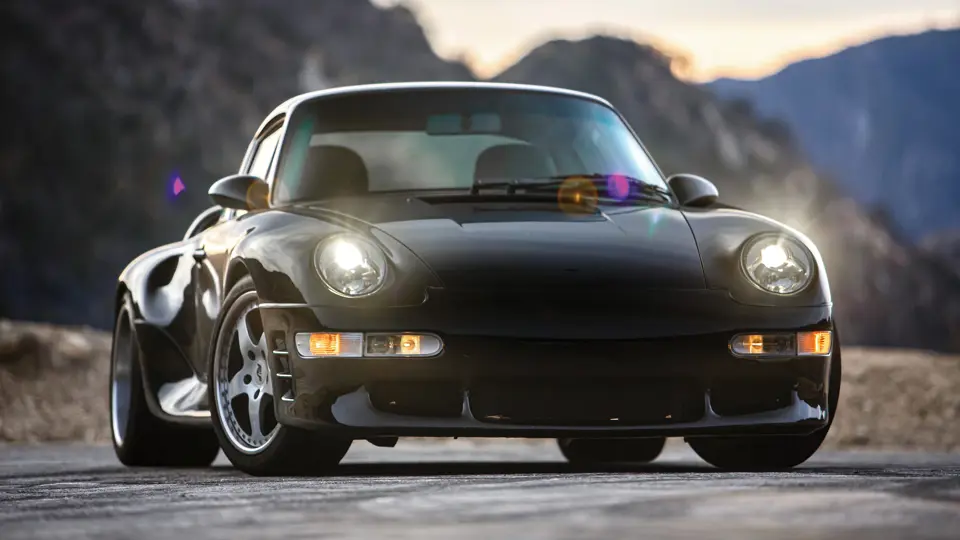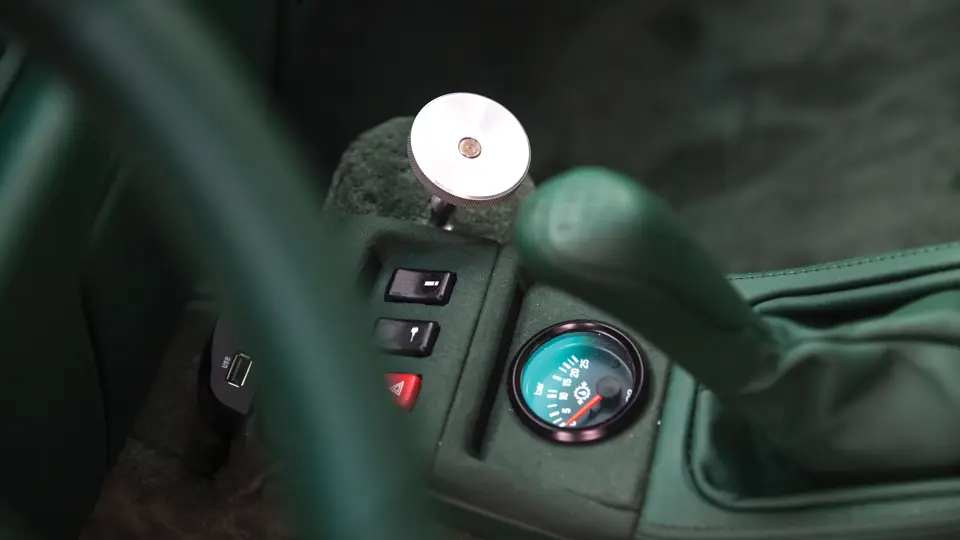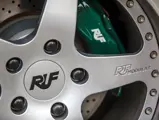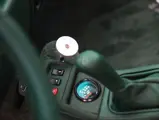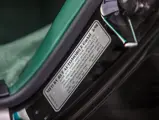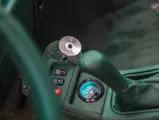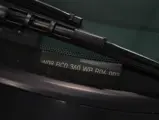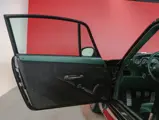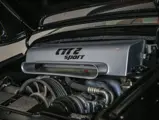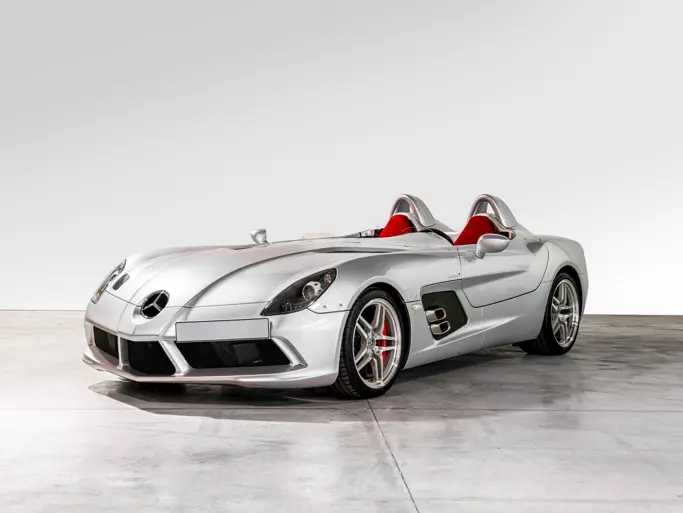Furthermore, the car recently passed the California Smog Check inspection.
Alois Ruf Jr. followed in his father’s footsteps, but only to a point. The elder Ruf grew his garage in southwestern Bavaria into a producer of touring buses. For the younger Ruf, a passion for motor vehicles began early and yet would take a decidedly more performance-oriented turn.
When Ruf Jr. took over the helm of their namesake company in 1974, they already had carved out a niche as a restorer and modifier of high-performance Porsches. The sports cars were built about 150 kilometers away near Stuttgart, and they were a relatively common sight in Pfaffenhausen, where the RUF operations were based. Into the 1980s after RUF tuned a 930 Turbo, the two companies developed a close relationship that continues today.
It was the CTR that truly put RUF on the map in the late 1980s. Based on the naturally aspirated Carrera 3.2, the car received a flat-six bored out to 3.4 liters, motorsports-grade Bosch ignition, and, of course, twin turbochargers. RUF built its own five-speed manual transmission. The eye-catching “Yellowbird,” as Road & Track famously nicknamed the car, was lightened and stiffened, which enabled it to reach a 213 mph top speed in testing.
The CTR2 was based on the 993 generation and was not merely an evolution of the original. When the 993 debuted in late 1993, it brought with it the most aerodynamic shape yet, plus a more sophisticated rear suspension designed to reduce lift-off oversteer. In time the 993 would be recognized as the height of air-cooled Porsche development. It represented a blend of modernity and classic 911 virtues. But in the mid-1990s, RUF was after one thing—speed—and it had Porsche’s backing. RUF had been granted full manufacturer status by the German government years prior, and Porsche was eager to deliver bodies in white to Pfaffenhause, where they would become RUF cars.
The CTR2 was tuned initially to produce 520 hp and later modified for a full 580 hp. Power for the first time in a RUF CTR could optionally go to all four wheels, and a silky-smooth RUF-modified six-speed gearbox was included. RUF offered optional comfort or sport suspension and wrapped low-profile performance tires around its characteristic five-spoke alloy wheels. The factory 911’s steel body panels were left in Zuffenhausen in favor of extensive Kevlar that kept the weight to about 3,000 pounds with standard rear-wheel drive. Special front and rear bumpers and fenders featured integrated heat extractors to provide cooling to the uprated brakes. A two-level rear wing kept the rear end planted, and each level had air intakes—one to the airbox, the other to the intercoolers—as the speedometer needle hurtled into triple digits. RUF’s signature integrated roll-cage allowed the rain gutter to be removed while still maintaining the structural integrity of the body (whereas, the rain gutter was a structural component on air-cooled 911s). Doing so improved the aerodynamics at high speeds, surely helping RUF to win the fastest production car title.
RUF touches inside gave the cars a luxurious, complete feel not found in other tuned cars. Ultrasoft leather was employed to cover the seats, dashboard, door panels, and center console. Highly legible gauges with green lettering filled the dash, albeit with a much wider range on the speedometer.
Alois Ruf Jr. had two cars entered in the 1997 Pikes Peak International Hill Climb in Colorado, where they took home 2nd and 4th places, losing only to a purpose-built car that weighed about 1,000 pounds less. The Pikes Peak cars served as development mules for the road-going CTR2 Sport that pushed the performance envelope even further. RUF built fewer than 30 CTR2s, slightly over half of which were Sport models with wider fenders to house bigger brakes and tires that paired with an even more buttoned-down suspension aimed at track use. CTR2 Sports included the higher-horsepower state of tune.
Offered for the first time at auction after having only traded hands on the private market, this 1998 CTR2 Sport is a standout even among its RUF brethren. The car was originally commissioned by Frank Beddor, the patriarch of the Minnesota family long associated with hill climbs in North America. It was Beddor’s sons who helped RUF prepare the prototype CTR2 Sport at Pikes Peak and later Virginia City. Appropriately, the car is fitted with a unique version of Porsche’s motorsports-derived all-wheel-drive system with a smooth aluminum knob that allows on-the-fly progressive transfer of power and torque bias between the axles. Very rare, this CTR2 Sport is said to be one of four examples to have ever been fitted with the system. Additionally, Bilstein PSS10 coilovers approved by Alois Ruf Jr. have been installed to improve the car’s handling tenacity.
The car is finished in black over RUF’s signature green leather interior and has been upgraded with a Porsche classic navigation system that includes a separate USB input. Less than 17,000 miles have been added since the CTR2 Sport was completed. A mechanical and cosmetic refresh was recently performed at the RUF factory in Pfaffenhausen, and this CTR2 Sport is set to be enjoyed at incredible speed and comfort by its next fortunate owner.




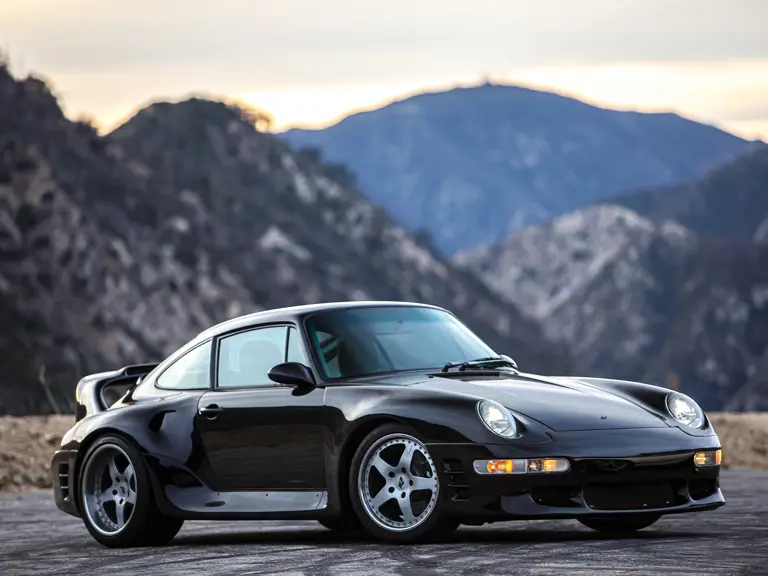
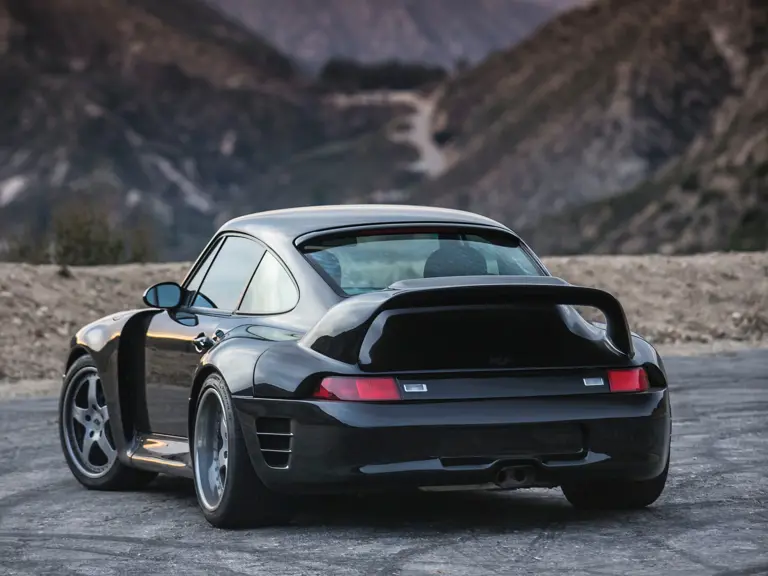

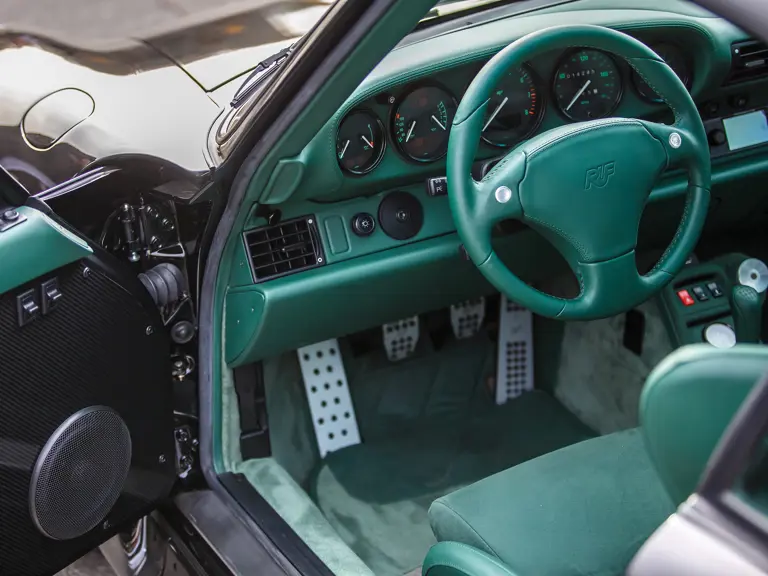
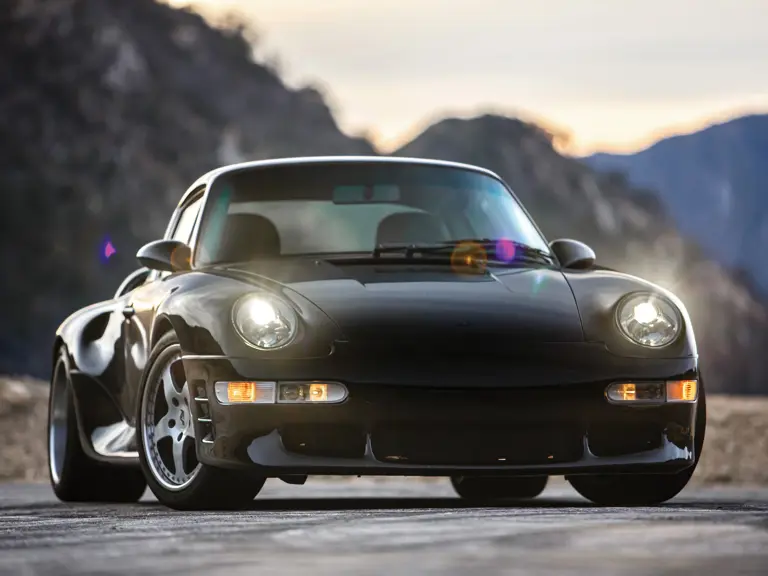
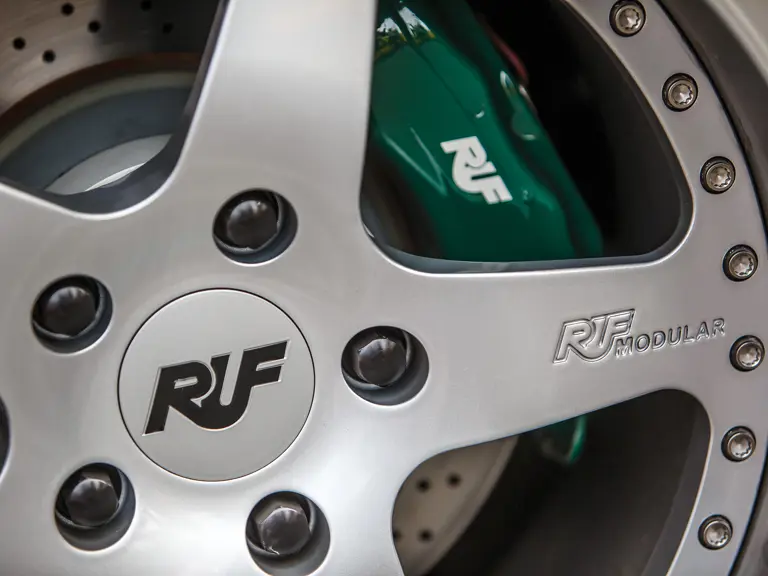
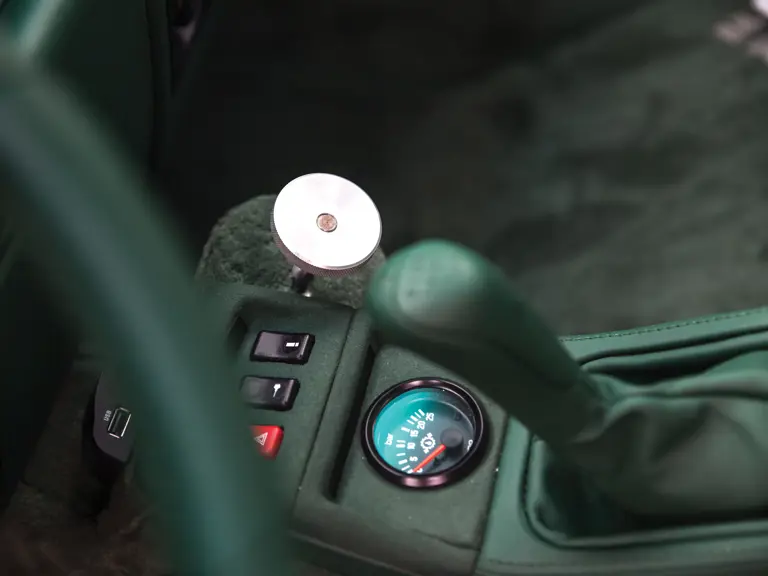
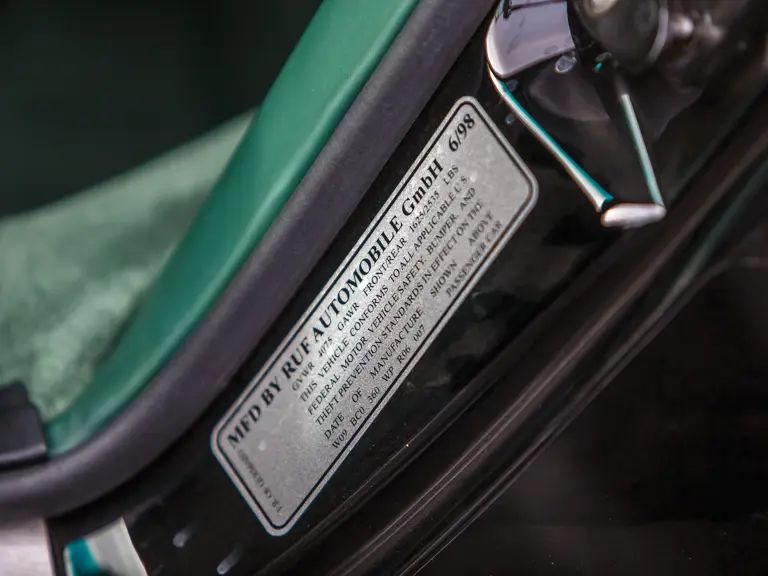
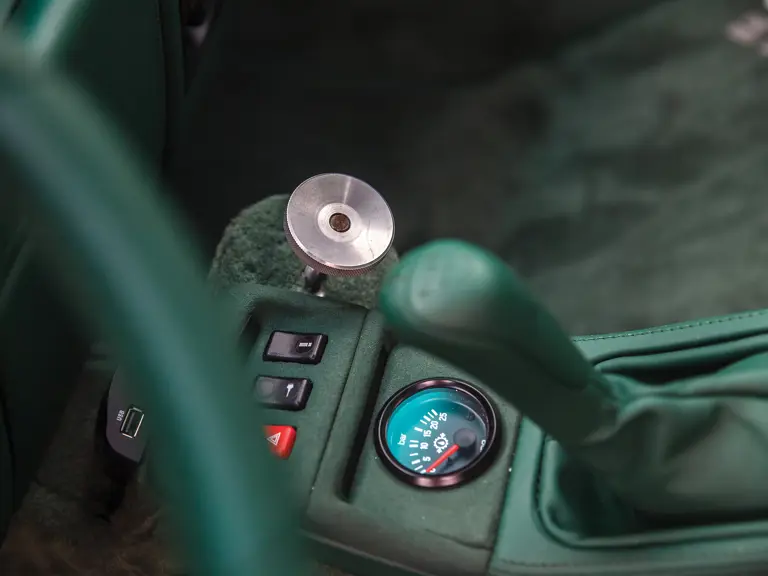

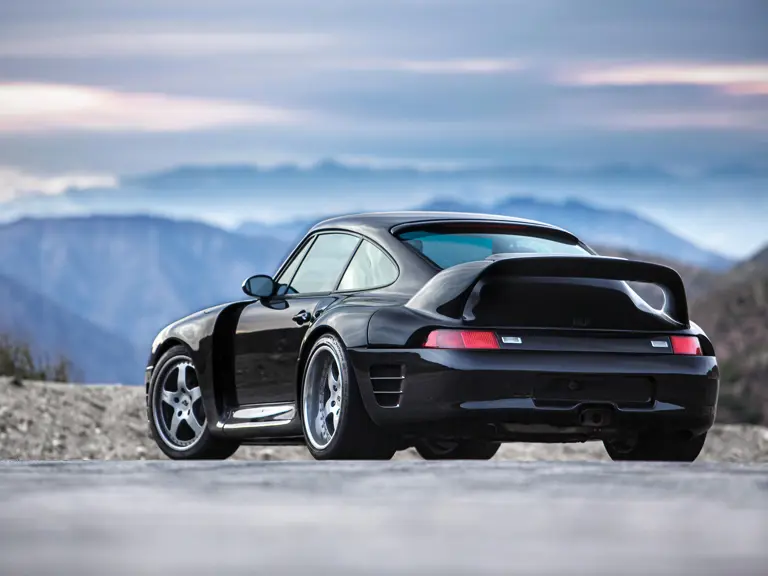

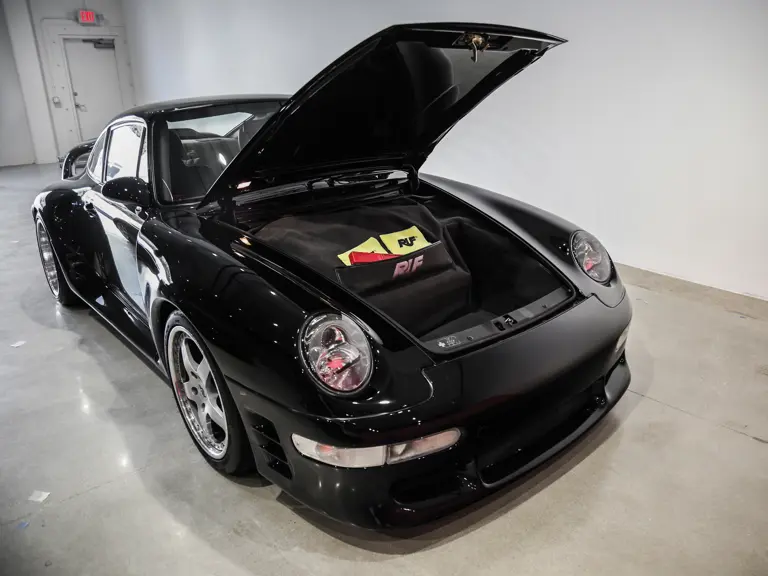

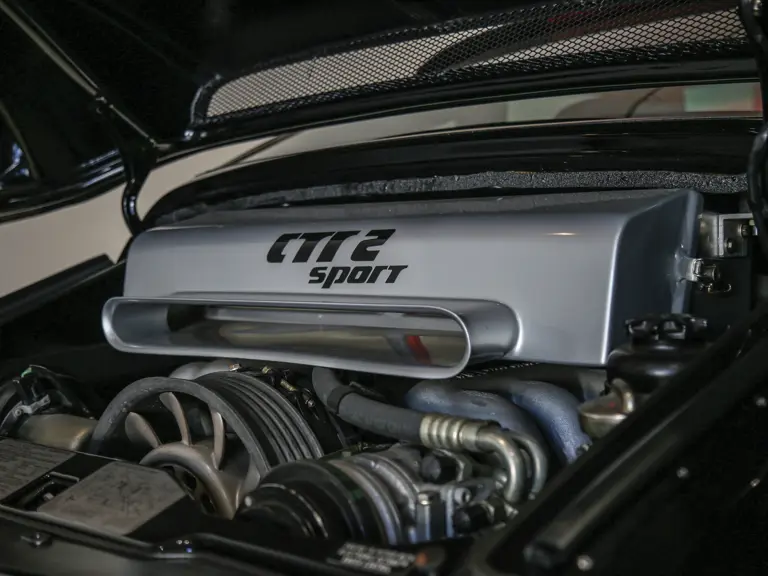
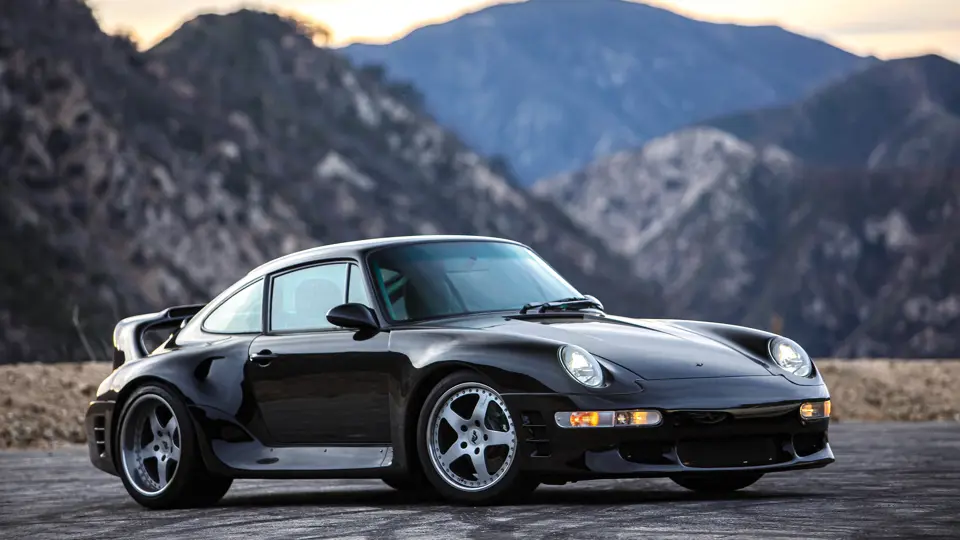
 | Monterey, California
| Monterey, California
